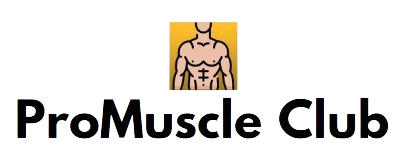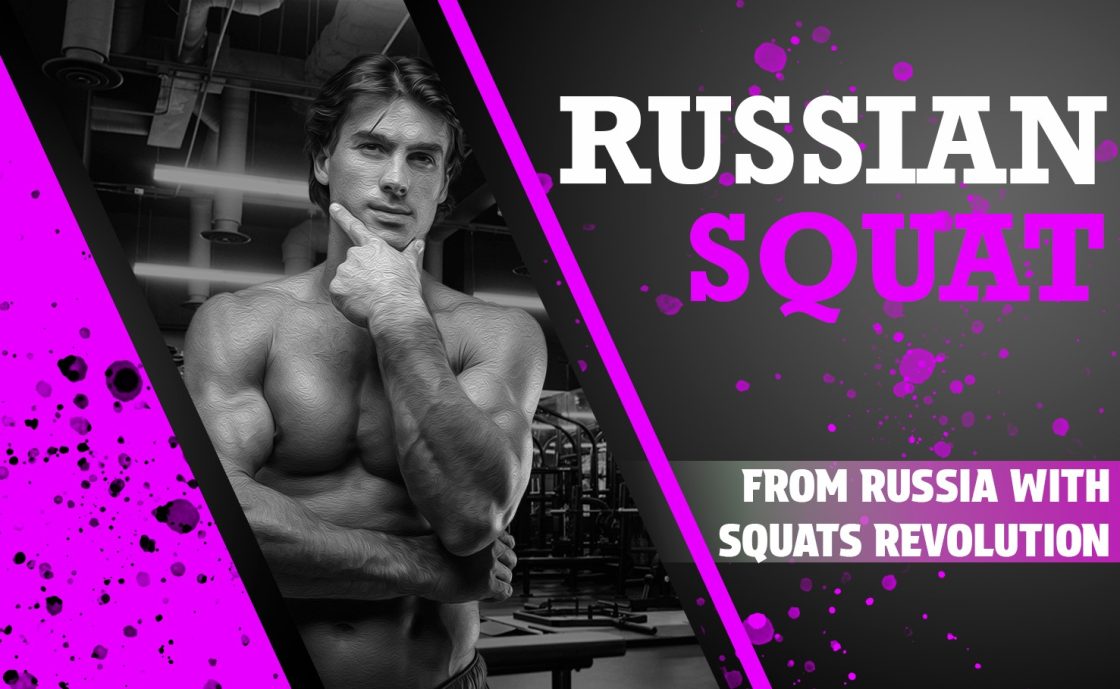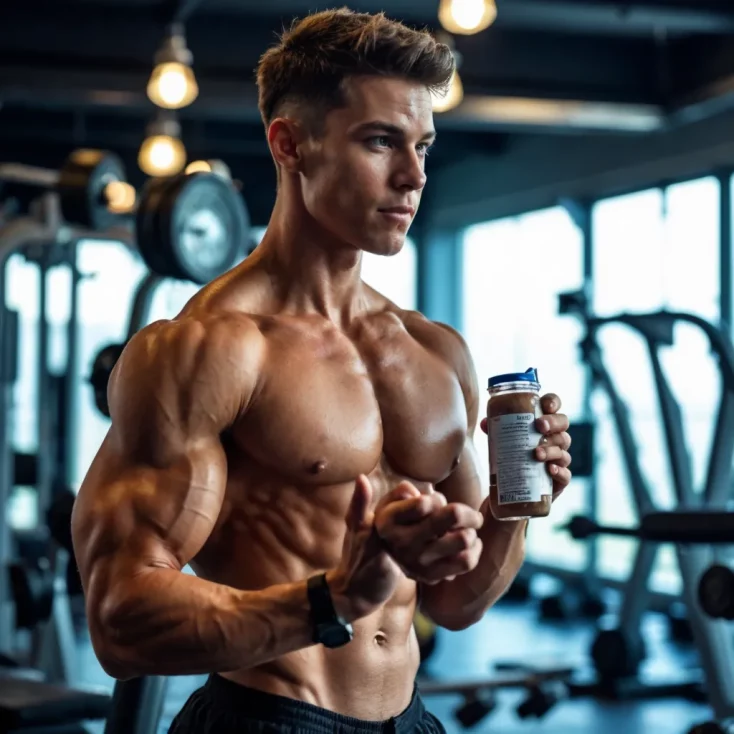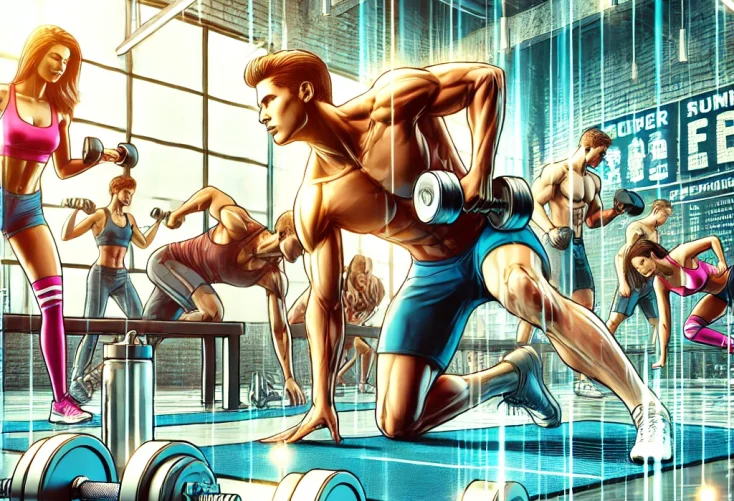Immerse yourself in the mental game of building discipline and determination with the Russian Squat. Enhance your mental resilience and focus, staying committed and motivated throughout your training journey. Empower yourself beyond bodybuilding, as the Russian Squat becomes a lifestyle that has a positive impact on your overall fitness and well-being. Begin on your leg power revolution today with the Russian Squat.
What is Russian Squat?
The Russian Squat is a special type of squat exercise that originated in Russia. It has gained popularity because it can really make a difference in a bodybuilder’s training routine.
This unique squatting technique has caught the attention of many fitness enthusiasts due to its ability to build leg strength and increase muscle mass. It involves a specific form and technique that when done correctly, helps target and work the leg muscles effectively.
Russian athletes have made a significant impact on the bodybuilding industry, showcasing the power of the Russian Squat program. Their achievements and transformations have inspired others to try this training method. By incorporating elements of the Russian Squat into their workouts, bodybuilders can take their leg training to a whole new level and see incredible results.
The Science Behind the Russian Squat Routine
Curious about the science that makes the Russian Squat routine such a powerhouse in the world of leg workouts? Get ready to uncover the secrets behind the science of the Russian Squat routine.
- When you perform Russian Squats, you engage multiple muscle groups simultaneously, including your quadriceps, hamstrings, glutes, and core. This full-body activation leads to an increase in muscle mass and strength, making it an efficient exercise for overall lower body development.
- Additionally, the dynamic nature of the movement requires stabilization from various muscle groups, which in turn enhances your balance and coordination.
- Regularly incorporating Russian Squats into your workout routine can also boost your body’s metabolism and promote fat loss. This high-intensity exercise elevates your heart rate, leading to increased calorie burn during and after your workout.
The Benefits of Russian Squats
This powerful exercise has gained popularity for its numerous benefits, making it a staple in many training programs.
- Increased Lower Body Strength
This compound exercise targets multiple muscle groups, including the quadriceps, hamstrings, glutes, and calves. By performing squats regularly, you can build powerful muscles in your legs, leading to enhanced strength and improved performance in various physical activities, such as running, jumping, and weightlifting.
- Improved Muscle Definition
As you lower yourself into a deep squat position, your muscles are forced to engage and work harder to lift the weight. This increased muscle activation can help sculpt and tone your legs, giving them a lean and defined appearance.
- Enhanced Joint Stability
When performed correctly, squats help strengthen the muscles around your knees, hips, and ankles, providing better support and stability to these joints. Strong and stable joints are essential for preventing injuries, especially during physical activities that involve heavy lifting or high-impact movements.
- Increased Calorie Burn and Metabolism Boost
Squats are a compound exercise that engages multiple muscle groups, requiring more energy and causing your body to burn more calories during and even after your workout. This increase in calorie burn can contribute to weight loss or weight maintenance goals. Additionally, squats have been shown to boost metabolism, increasing the number of calories you burn even at rest.
The Russian Squat Technique
Ready to take your leg training up a notch and unlock your full potential? Look no further than the Russian Squat technique. This powerful exercise has become a game-changer for bodybuilders around the globe.
Mastering the Correct Form and Technique for the Russian Squat
To truly harness the benefits of the Russian Squat, it’s crucial to nail down the correct form and technique.
- Warm-up: Before diving into Russian Squats, warm up your muscles with dynamic exercises like leg swings and bodyweight squats. This will get your blood flowing and prepare your body for the exercise ahead.
- Foot Placement: Stand on your feet and keep shoulder-width apart with your toes slightly pointing outward. This stance will help you maintain balance and stability throughout the movement.
- Initiate the Descent: Bend your knees and slowly lower your hips as you descend. Keep your back straight and your chest up throughout the movement. Engage your core to maintain stability.
- Reach Parallel: Continue lowering yourself until your thighs are parallel to the ground. This is the ideal depth for the Russian Squat. Be mindful not to let your knees cave in or extend past your toes.
- Drive Through Your Heels: As you reach the bottom position, push through your heels to rise back up. This will activate your glutes and hamstrings, maximizing the effectiveness of the exercise.
- Maintain Control: Throughout the entire movement, focus on maintaining control and avoiding any sudden jerky motions. Keep your core engaged and concentrate on proper form to prevent injury.
- Breathe: Remember to breathe throughout the exercise. Inhale as you lower yourself and exhale as you drive through your heels and rise back up.
- Practice Regularly: Consistency is key when it comes to mastering any exercise. Incorporate Russian Squats into your leg training routine regularly to build strength and see improvements over time.
Tips and Tricks to Optimize Performance and Prevent Injury
While the Russian Squat is a fantastic exercise to build leg strength, it’s important to optimize your performance and ward off potential injuries.
- Begin by warming up your muscles with dynamic exercises like leg swings and squats. This enhances blood flow and flexibility, reducing the chance of strains or sprains.
- Additionally, gradually increase the weight you lift to avoid sudden strain on your muscles and joints. Use a challenging weight that still allows you to keep proper form. Don’t forget to breathe and exhale as you push through your heels during the ascent.
- Lastly, prioritize rest and recovery to allow your muscles ample time to heal and grow. Incorporate stretching and foam rolling exercises into your routine to release tension and prevent tightness.
Avoiding Common Mistakes: Troubleshooting Your Russian Squat
Mastering the proper technique how to do the Russian Squat is crucial to avoid injury and maximize results. In this guide, we will address common errors in technique and how to correct them, as well as discuss potential pitfalls and challenges you may face during your Russian squat program.
Common Errors in Technique and How to Correct Them
- One common mistake during Russian squats is leaning too far forward, which can put excessive strain on your lower back and knees.
- To correct this, focus on keeping your chest upright, shoulders back, and core engaged throughout the movement.
- Ensure your knees are tracking in line with your toes, and distribute your weight evenly on your heels to maintain balance and stability.
- Another error is failing to achieve proper depth in the squat, which limits the effectiveness of the exercise.
- Aim to descend until your thighs are parallel to the ground or lower, maintaining a full range of motion.
- If flexibility is a limiting factor, work on improving hip mobility through stretching exercises and gradually increase your squat depth over time. This will engage your muscles more effectively and prevent compensation patterns.
Addressing Potential Pitfalls and Challenges During the Russian Squat Program
- One potential challenge you may encounter in your Russian squat program is experiencing muscle imbalances or weaknesses.
- To address this, incorporate unilateral exercises like lunges or single-leg squats to identify and correct any disparities between your left and right sides.
- Balancing strength and stability in both legs will improve overall performance and reduce the risk of injury during your workouts.
- Another pitfall to watch out for is overtraining or progressing too quickly in your Russian squat routine.
- Gradual progression is key to prevent overuse injuries and allow your muscles to adapt and grow stronger over time.
- Listen to your body, and give yourself adequate rest days between intense leg workouts to promote recovery and prevent burnout.
- Patience and consistency will lead to long-term success in your Russian squat program.
Designing an Effective Russian Squat Program
If you’re looking to enhance your lower body strength and build defined leg muscles, the Russian Squat program could be the perfect addition to your workout routine. But how do you design a program that’s tailored to your individual goals and needs?
Creating a Personalized Russian Squat Routine Based on Individual Goals
Russian Squats are a versatile exercise that can be adapted to various goals, including strength building, muscle hypertrophy, fat loss, and athletic performance. Based on your objectives, you can adjust your Russian Squat routine accordingly.
- If your goal is to build leg muscle size and strength, you can benefit from incorporating heavier weights and lower repetitions into your routine.
- For individuals looking to improve their athletic performance, incorporating explosive plyometric variations of the Russian Squat such as jump squats could bring tremendous benefits.
- If fat loss is your primary objective, you may consider higher repetition ranges and minimal rest intervals.
By designing a personalized Russian Squat routine based on your specific goals, you can optimize your training and achieve results that are in line with your objectives.
The Importance of Periodization and Progressive Overload in the Program
Periodization and progressive overload are two critical factors that can significantly impact your Russian Squat program’s effectiveness.
- Periodization involves scheduling your workouts in phases or cycles to prevent plateauing and ensure optimal muscle adaptation. A well-planned periodization program can help prevent overuse injuries and maximize your gains from Russian Squats.
Progressive overload, on the other hand, involves gradually increasing the weight or resistance over time to continuously challenge your muscles and promote muscle hypertrophy.
- A proper progressive overload program can prevent stagnation in your training and ensure constant progression towards your goals.
- It can help you continue to challenge your muscles and see ongoing improvements in your lower body strength and muscle definition.
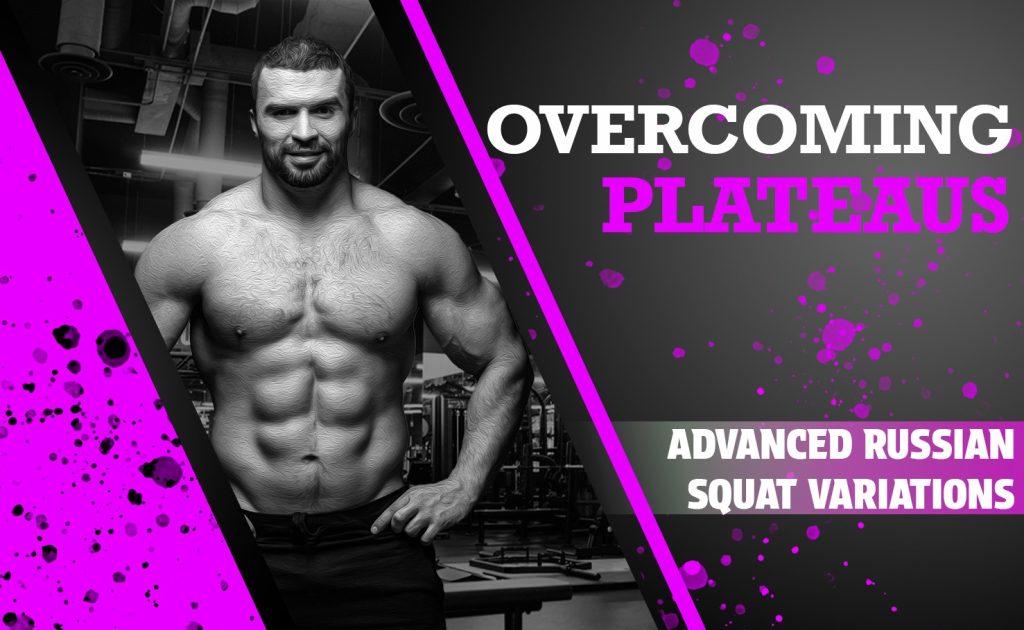
Overcoming Plateaus: Advanced Russian Squat Variations
If you’ve been incorporating Russian squats into your workout routine and are looking to take your leg training to the next level, it’s time to explore advanced variations and modifications. By incorporating different techniques and equipment, you can intensify your Russian squat program and overcome plateaus.
Exploring Variations and Modifications
- Tempo Russian Squats
Instead of performing them at a regular pace, focus on a slower lowering phase and explode upwards with controlled power. This variation increases time under tension, engages your muscles and improves strength gains.
- Start by lowering for three seconds, holding for one second at the bottom position, and then exploding upwards.
- Russian Pistol Squats
Russian pistol squats are an advanced variation that requires exceptional balance, flexibility, and strength. It places a significant demand on the working leg and helps improve stability and control.
- In this variation, you perform a squat on one leg while keeping the other leg extended straight in front of you.
- Start by performing pistol squats with a raised surface, such as a bench or step, to reduce the range of motion until you gain enough strength and balance to perform them without assistance.
Incorporating Accessories and Equipment
- Resistance Bands
Adding resistance bands to your Russian squats can provide continuous tension throughout the movement and activate your muscles even more. This variation helps activate your glutes, quads, and hamstrings, pushing your legs to work harder and break through plateaus.
- Attach one end of the band to a sturdy anchor point and the other around your waist.
- As you perform the squat, the band will resist against your movement, making it more challenging.
- Weighted Vest
Another option to intensify your Russian squats is by incorporating a weighted vest. By adding extra weight, you increase the load on your leg muscles, making them work harder and stimulating muscle growth.
- Start with a light-weighted vest and gradually increase the load as you get stronger.
- Remember to maintain proper form and focus on the mind-muscle connection to maximize the benefits of this variation.
One Week Workout Routines with Russian Squat Routine
To incorporate Russian Squat routine, we have developed a sample one-week full body workout plan. This plan will help you strengthen your lower body while also working other muscle groups.
Day 1 – Legs and Back
- 3 sets of 10 Russian squats with moderate weight
- 3 sets of 10 dumbbell rows for your back muscles
Day 2 – Chest and Shoulders
- 3 sets of 10 dumbbell chest presses for your chest
- 3 sets of 10 dumbbell shoulder presses for your shoulders
Day 3 – Active Recovery
- Engage in light cardio such as walking or cycling for 30 minutes
- Perform bodyweight squats for 3 sets of 10 reps to maintain mobility
Day 4 – Full Body Strength
- 4 sets of 8-10 Russian squats with heavy weight
- 3 sets of 10 push-ups for your chest
Day 5 – Arms and Core
- 3 sets of 10 bicep curls for your arms
- 3 sets of 10 tricep dips for your triceps
- 3 sets of 10 plank exercises for your core
Day 6 – Leg Day
- 3 sets of 12 Bulgarian split squats on each leg for your glutes and legs
- 3 sets of 10 Russian squats with moderate weight
Day 7 – Rest Day
- Allow your body to recover and prepare for the upcoming week
Russian Squat Program
Incorporating Russian squats into your routine can help you achieve your fitness goals. Let’s explore a simple and effective Russian squat program that you can follow to maximize your leg gains.
Warm-up:
- Begin with a five-minute cardio warm-up, such as jogging or cycling, to increase blood flow and raise your body temperature.
- Follow up with dynamic stretches targeting your lower body muscles, including leg swings and hip circles.
Basic Russian Squat:
- Start with bodyweight squats to familiarize yourself with the movement.
- Aim for three sets of 12-15 repetitions, focusing on maintaining good form throughout.
Goblet Squats:
- Hold a dumbbell or kettlebell close to your chest, positioning your hands under the weight.
- Lower your body into a squat, keeping your chest up and core engaged.
- Perform four sets of 10-12 repetitions, gradually increasing the weight as you get stronger.
Bulgarian Split Squats:
- Stand with one foot in front of you and the other foot elevated on a bench or step behind you.
- Lower your body by bending your front knee, while keeping your torso upright.
- Perform three sets of 8-10 repetitions on each leg, focusing on balance and stability.
Pause Squats:
- Start with a basic squat and pause for a two-second count at the bottom position.
- This pause eliminates the momentum and forces your muscles to work harder.
- Perform four sets of 8-10 repetitions, using a weight that challenges you.
Strengthening Russian Squat Program
In this guide, we’ll look into a strengthening Russian squat program that will help you build powerful legs and increase your overall lower body strength. Let’s get started!
Back Squats:
- Load a barbell with a weight that challenges you, positioning it on your upper back.
- With feet shoulder-width apart, lower your body into a squat, keeping your chest up and knees in line with your toes.
- Aim for four sets of 6-8 repetitions, gradually increasing the weight as you progress.
Front Squats:
- Position the barbell across the front of your shoulders, resting on your fingertips.
- Lower your body into a squat, focusing on keeping your chest up and elbows high.
- Perform three sets of 8-10 repetitions, gradually increasing the weight over time.
Overhead Squats:
- Hold a barbell or a dumbbell overhead, with arms fully extended.
- Lower your body into a squat, maintaining stability and control.
- Aim for three sets of 8-10 repetitions, challenging yourself with appropriate weight.
Russian Step-Ups:
- Stand facing a box or step, placing one foot on it.
- Push through your elevated foot and lift your body up until the leg is fully extended.
- Aim for three sets of 10-12 repetitions on each leg, gradually increasing the height of the step for added challenge.
Bulgarian Split Squats with Barbell:
- Place one foot on a bench or step behind you and hold a barbell across your upper back.
- Lower your body into a split squat, keeping your front knee in line with your toes.
- Perform three sets of 8-10 repetitions on each leg, challenging yourself with appropriate weight.
Enhancing Mental Resilience and Focus with the Russian Squat Program
There is no denying that strength training goes beyond just improving physical fitness. Engaging in a rigorous workout routine, such as the Russian squat program, can have a profound impact on our mental resilience and focus. The mental fortitude required to push through challenging sets, overcome obstacles, and stay committed to the journey is what sets apart the champions from the rest of the pack.
Building Mental Resilience through the Russian Squat Program
The Russian squat program presents us with unique opportunities to develop mental resilience. It pushes our limits and forces us to face discomfort and adversity head-on.
- When tackling heavy weights and intense workouts, our bodies may scream for us to quit, but it is our mental strength that carries us through.
- Each repetition becomes a test of determination and resilience, teaching us to embrace discomfort, push past our limits, and become mentally stronger in the process.
- Additionally, the Russian squat program is a game of consistency and discipline. Following a structured routine and adhering to the program’s demands require a high level of commitment.
- Each workout becomes a battle against the voice inside our head that tempts us to skip a session or give in to laziness.
Strategies to Stay Committed and Motivated
Staying committed and motivated throughout the training journey can be challenging, but it is crucial for long-term success. Here are some strategies to help you stay on track:
- Set Clear Goals: Define what you want to achieve with the Russian squat program, whether it’s increasing strength, improving muscle definition, or overcoming a performance plateau. Having clear goals provides direction and keeps you motivated.
- Break it Down: The Russian squat program may feel overwhelming at times, especially when the weights become heavier or the demands increase. Break down the program into smaller milestones or short-term goals. Focus on one session at a time, celebrate small wins, and enjoy the progress you make along the way.
- Find Accountability: Share your goals and progress with a friend, workout buddy, or online community. By involving others in your journey, you create a sense of accountability that can keep you motivated during challenging times.
- Embrace the Process: Results may not come overnight, and progress can sometimes feel slow. Embrace the process and enjoy the journey. Remind yourself that every squat, every rep, and every workout is contributing to your overall growth and progress. Stay patient and trust the process.
Burn Those Legs in a Russian Way
In conclusion, the Russian squat is a simple yet powerful exercise that has revolutionized the fitness world. Its impact can be attributed to the specific training program associated with it, which emphasizes increasing weight and reducing repetitions over time. This method challenges the muscles and provides numerous benefits, including increased lower body strength, improved muscle definition, enhanced joint stability, and a boost in calorie burn and metabolism.
While the origins of the Russian squat may be rooted in Russia, its benefits have spread worldwide, making it a popular exercise among fitness enthusiasts and athletes alike. Incorporating Russian squats into your training routine can help you achieve your fitness goals and take your leg strength to new heights. So, whether you’re a beginner or a fitness enthusiast looking for a new challenge, give the Russian squat a try and experience the benefits of this revolutionary exercise.
